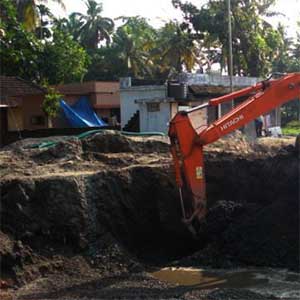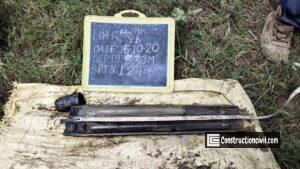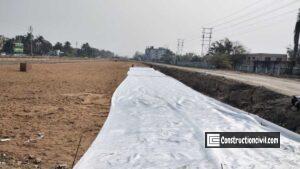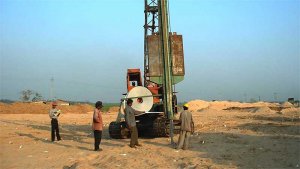Rearrangement of the soil structure from a loose to the dense state by applying Shock and Vibration called in-situ soil densification. This method is applicable only for cohesionless soil under high water table condition; where the depth of treatment may be beyond 30.00m. Methods namely Vibroflotation, Blasting and Dynamic Compaction generally being adopted at the site for ground improvement purpose.
Summary of Improvement Method for In-Situ Deep Compaction of Cohesionless Soils as per IS: 13094:
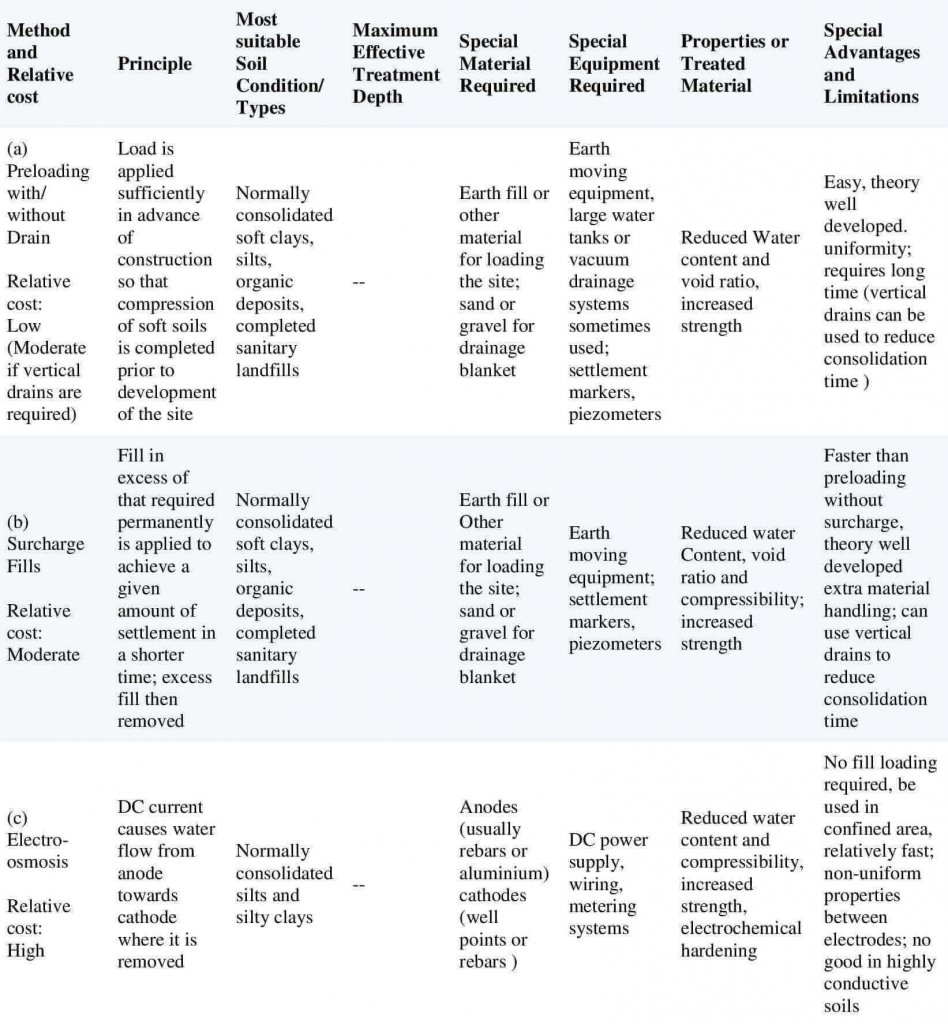
Also, Read: Ground Improvement Techniques – Vertical Drain & Stone Column
Ground Improvement using Vibroflotation:
- Vibroflotation is suitable for cohesionless granular soils with less than 20% fines
- Useful in saturated and partially saturated soil
- Compaction by vibroflotation process using a vibrofloat
- Insertion and slow removal of rotating vibrofloat with water jets
- Compaction of surrounding loose soil
- Enlarged hole surrounding Vibrofloat is backfilled with good granular soil
- The process can be used to increase the density up to 30 m depth in Loose Sands
- The spacing of borehole maybe 2.00 m c/c in grid pattern depending on the type of soil
Also, Read: Soil Reinforcement Methods – Advantages and limitations
Methodology for Vibroflotation:
Stage-1
Before insertion into the ground top level, the vibrator is the run-up to full speed. The bottom water jet is then opened resulting in a saturated mass of soil available for penetration and compaction
Stage-2
With the jet completely open the Vibroflot is permitted to sink into the soil under its self-weight. Vibration combined with the upward movement of water produces a quick condition facilitating rapid drop
Stage-3
During the drop, the material surrounding the vibrator is compacted with the development of a crator about three feet in diameter at ground level. When the required depth is achieved, water power is turned over from the bottom jet to the top jet on the machine. The sequential downward flow then helps to carry the soil particles along the sides of the machine and this, contemporaneously with the mechanical vibration compacts the soil.
Stage-4
As compaction gains, additional soil from the surfaces is backfilled into the crator. Compaction continues while the vibroflot is lifted in stages to the surface.
Also, Read: Top 7 Ground Improvement Techniques in Civil Engineering
Ground Improvement Using Blasting of In-situ sub-soil:
- Shock waves and vibrations cause liquefaction and displacement with settlement to higher density
- Mostly suitable for Saturated and Partially Saturated Clean Sand and silts with a maximum 15% passing 75-micron sieve size
- Maximum effective treatment depth may be greater than 30.00 m
- Material namely explosives, backfill material to plug drill hole, hole casing
- The requirement of special equipment namely Jetting and Drilling Machine
- Can obtain relative density up to 70-80%, Possibility of Variable Density and time-dependent Strength Gain
- Rapid and inexpensive method and can be used for any size of the area
- No improvement near-surface which need separate Compaction Effort
Ground Improvement using Dynamic Compaction/Consolidation:
Dynamic compaction is a process that is adopted to increase the density of the soil when some subsurface restraints make other systems unsuitable. It is a method to improve the density of soil deposits. The process involves dropping a heavyweight repeatedly on the ground surface at periodically spaced intervals.

Also, Read: Major Role of Ground Improvement in The Structure Foundations
Advantages of Dynamic Compaction / Consolidation:
- Application on many types of soils ranging from Rock-fill to Clayey material of low sensitivity and even on peat
- Large depth of improvement – Normally in the order of 20 to 25 m and may be as deep as 30-40 m
- Resulting in a significant reduction in the void ratio of foundation soil leading to an increase in its strength and bearing capacity
- Considerable reduction in post-treatment settlement
- Increase in the resistance of soft foundation soil to liquefaction
- Economical for a very large site
Theoretical Considerations:
- Compressibility of saturated type soils due to the presence of microbubbles
- Gradual liquefaction under repeated load
- Change of permeability of soil mass due to the presence of fissured and / or the state of near liquefaction and the state played by the absorbed water
- Thixotropic recovery
Design and practical aspects of Dynamic Compaction / Consolidation:
- Preliminary Investigation including “Dynamic Consolidation Test”
- Field Methodology – Repeated falling “Heavy Tempers” of 10 to 40 tonne from a height of 10 to 40 m
- Influence depth
(i) Impact Energy
(ii) Type of Equipment
(iii) Foundation Soil type
(iv) Water Conditions
Site Preparation for Dynamic Compaction / Consolidation:
- Soft Foundation Soil to be overlain by the working platform of granular soil to support heavy tampers of weight 60 to 200 ton
- Provision of horizontal drains by constructing trenches of depth 2-3 m along with perforated plastic pipes at the trench bottom
Computational control of Dynamic Compaction / Consolidation:
- Use of Pressuremeter and Penetration Tests for the measurement of strength and compressibility
- Use of Piezometers to determine the minimum delay between each pass
- Density and Water Content measurement
- Topographical measurement of ground surface for the determination of overall variation of dry density
Equipment Used for Dynamic Compaction / Consolidation:
Settlement Reduction:
- The occurrence of greater settlement by heavy tamping than static preloading – as large as 2.5 to 3.0 times
Vibrational Effects:
- Prohibition of Method in an urban area and near existing structure due to production relatively large impact
